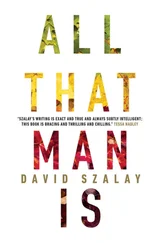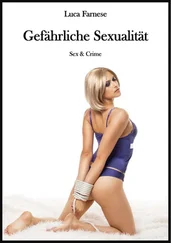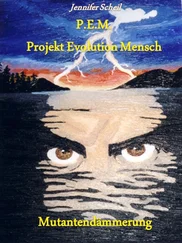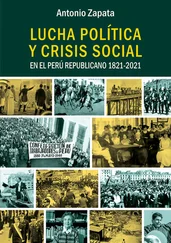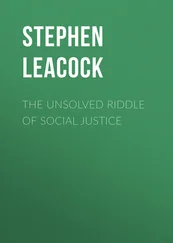The book is thus built around the idea that through wartime sexual violence, and wartime sexual violence against men in particular, social hierarchies are imposed, maintained or contested. It explores how conflict-related sexual violence against men builds on the significance of gender norms and values in relation to other dimensions of social, economic, cultural and political power and thereby tries to strengthen or challenge the existing order. This theoretical standpoint allows to understand variations in intensity and types of sexual violence against men in extremely diverse settings, from ethnic conflicts to “anti-terrorism”, counter-insurgencies and to international interventions. In that perspective, it obviously requires a careful examination of the context, since gender models, as well as wider societal norms that also play a role in sexual violence, only make sense in specific historical, political and cultural contexts.
From an empirical standpoint, this book builds upon the definition of sexual violence provided by the World Health Organization: “Sexual violence is defined as: any sexual act, attempt to obtain a sexual act, unwanted sexual comments or advances, or acts to traffic, or otherwise directed, against a person’s sexuality using coercion, by any person regardless of their relationship to the victim, in any setting” (Krug et al. 2002, 149). It is important to underscore that for the purposes of this book, sexual violence includes, but is not limited to, rape, sexual torture, sexual mutilation, sexual humiliation and sexual slavery, committed by armed actors on- or off-duty, but also sometimes by non-combatant strangers. Instances of domestic/intimate partner sexual violence have been considered and included when survivors or perpetrators connected them to the wider conflict context. Adopting a wide enough definition of sexual violence is particularly important because, as we will see, during conflicts men and boys are less likely than women and girls to be raped, but are more likely to be victims, for instance, of beatings or other forms of torture of the genitals. So in contrast with existing monographs on wartime sexual violence that focus on female sexual victimization and thus mostly on cases of rape and sexual slavery, the data collected for this book includes a broad range of acts, from rape and sexual slavery, to torture of the genitals and to mutilation and castration, among many others.
It is also worth mentioning that throughout this book, the expression “sexual violence against men” will be used, rather than “sexual violence against men and boys”. This is not to imply that boys are not targeted for wartime sexual violence, as many such cases have been documented, especially against male child soldiers who are likely to be used as sex slaves by older combatants (Betancourt et al. 2011) and in asylum countries (UNHCR 2017b). However, most evidenced cases of male sexual brutalization in conflict areas refer first and foremost to adult civilians and combatants, as well as to adolescent, rather than pre-adolescent boys (UN 2013, 14–15), a trend that clearly sets apart sexual violence against males in conflict zones from cases of sexual abuse committed in peacetime. [2] The other two main differences with what we know of peacetime or non-conflict-related childhood sexual abuse pertain to the public nature of wartime sexual violence, whereas non-conflict-related childhood sexual abuse is usually perpetrated in secrecy, and to the fact that perpetrators of non-conflict-related childhood sexual abuse are often relatives and in a position of trust vis-à-vis the victim, in opposition to perpetrators of wartime sexual violence, who are often unknown or enemies to the victim (UN 2013, 14–15).
In other words, this type of violence is primarily exerted on individuals who are considered, socially, culturally and sexually, as grown men, even though they might not have reached adulthood in the Western legal sense. The choice to refer to “sexual violence against men” thus does not mean to exclude boys, but to underscore the intended meaning of wartime sexual violence against males, that is to attack those who are old enough to embody masculinity and to hold cultural, social, economic, sexual, political and military power.
RESEARCHING WARTIME SEXUAL VIOLENCE AGAINST MEN
Exploring wartime sexual violence against men entails disrupting conventional frames of understanding of wartime (sexual) violence. It requires questioning established narratives that posit women and girls if not as the only victims of sexual violence, at least as making up the “immense majority” of victims, and that often designate men as perpetrators by default. It also demands to critically review common assumptions about combatants, as ruthless, powerful and seemingly invulnerable men preying on what Cynthia Enloe calls defenceless women and children.
Nobody who has set foot in Eastern DRC during the past decade can have missed the plethora of international and local NGOs and programs whose main focus is to provide support to female victims of rape and of other types of sexual violence. Cities like Bukavu in Southern Kivu or Goma in Northern Kivu, host hundreds of such initiatives. And indeed, when I first visited places like the Panzi hospital in Bukavu, which specializes in the treatment of survivors of sexual violence, I was overwhelmed by the number of women and sometimes very young girls admitted every day, by their physical and psychological suffering, but also by their sometimes incredible resilience and strength of will. Some of the (male and female) combatants’ stories I had started collecting around the same time, many of which included gruesome episodes of rape and sexual torture, only confirmed that sexual violence has been a crucial characteristic of conflicts in the Great Lakes region and not just one of their side-effects. But as some of the (mostly female) combatants I spoke with started to draw my attention to the fact that men too were targeted by sexual violence, I began to wonder why so few humanitarian organizations or policy-makers, not to mention academics, seemed to be interested in the fate of male survivors of sexual violence, in the Great Lakes region of Africa or in other conflict settings.
I decided at that time to begin what would prove to be a sometimes painfully slow and complicated work for compiling existing empirical information on conflict-related sexual violence against men in various conflict settings, and for gathering male survivors’ and perpetrators’ stories, as well as others’ testimonies, such as medical and humanitarian staff. This book builds on such empirical data, collected mostly in the Great Lakes region of Africa, where I have been spending between three weeks and a month per year between 2009 and 2014. More specifically, I have collected data in the North and South Kivu provinces of the DRC, which appear to be one of the regions in the world where (conflict-related) sexual violence against both males and females is the most widespread. I have also conducted interviews and field observation in Burundi (mostly in the provinces of Bujumbura Mairie and Bubanza) where the use of sexual violence is said to have been one of the main features of the conflict that tore the country apart between 1993 and 2005. I have also collected data in Rwanda, and spoke with Rwandan refugees settled elsewhere, on the issue of sexual violence during the 1994 genocide. The choice to focus a large part of the process of data collection on the Great Lakes region of Africa reflects the role the Congo and the rest of the region play in structuring and framing our current understanding of sexual violence in conflict zones, just like Bosnia-Herzegovina did in the 1990s. Named “rape capital of the world”, [3] The expression was used in 2010 by Margot Wallstrom, the UN’s special representative on sexual violence in conflict, after her return from the Congo.
the Congo and more specifically the wars raging in its Eastern provinces, indeed often convey images of war savagery and of human rights abuses. But the perpetration of sexual violence during conflicts is certainly not limited to that region of the world, and the use of sexual torture against male prisoners has, for instance, been already documented in very different settings, as the well-known cases of Guantánamo and Abu Ghraib illustrate. As I reflected that the type of conflict setting was likely to heavily influence the characteristics of sexual violence that could be observed, the idea of using data collected during interviews that I had also been conducting since 2005 with (former) male members of paramilitary groups in Belfast and in (London)Derry took hold. The use of sexual torture in Northern Ireland, by members of security forces as well as by paramilitary groups, has been if not common, at least recurrent throughout the period called “the Troubles”, which spanned from the late 1960s to the signing of the Belfast/Good Friday Peace Agreement in 1998. Unsurprisingly, most of the Northern Irish combatants I have met, many of whom had been imprisoned at some point in their lives, had stories of sexual abuse to share too. I have completed this process of empirical data collection by interviewing medical staff, and in particular mental health professionals, specialized in providing support to asylum seekers and refugees from conflict zones recently settled in Europe. All of them have had to deal on a regular basis with male refugees who have been sexually tortured in their countries of origin, in neighboring countries or in transit countries, notably in Syria, Iraq and Libya.
Читать дальше

